
As you consider your next run, you may want to ditch your shoes and try barefoot running. This approach can help you strengthen your feet, improve your posture, and reduce the risk of injury. By running barefoot, you can spread your toes, enabling a more natural movement, and achieve a better footstrike, which can lower your risk of injury. With stronger feet and improved balance, you can enjoy a more efficient and injury-free running experience.
Benefits of Ditching Your Shoes
Before you consider ditching your shoes, it’s necessary to understand the benefits of barefoot running. Running barefoot can help you develop stronger feet and ankles, improve your posture and balance, and reduce the risk of injuries. By running without shoes, you can also experience a more natural running form and improve your overall running efficiency.
Running Barefoot Helps Strengthen Your Feet
Against the common belief that shoes are necessary for support, running barefoot can actually help strengthen your feet and ankles. When you run without shoes, you are forced to use the muscles in your feet and legs more, which can lead to increased strength and stability. This can also help improve your balance and posture, reducing the risk of injuries and improving your overall running performance.
With No Shoes, You Can Spread Your Toes
Before you start running barefoot, it’s necessary to understand the importance of toe splay. When you run without shoes, you can spread your toes naturally, which can help improve your balance and stability. This can also help reduce the risk of injuries and improve your overall running performance.
But what exactly happens when you spread your toes while running barefoot? When your toes are allowed to splay naturally, it can help improve your balance and stability by allowing your feet to function more naturally. This can also help reduce the risk of injuries and improve your overall running performance. By running barefoot, you can experience the freedom and natural movement that comes with allowing your toes to spread and function naturally.
Improving Your Running Form
Any runner can benefit from improving their form, and barefoot running is a great way to do so. By ditching your shoes, you can strengthen your feet, ankles, and calves, and improve your posture and balance. This, in turn, can help reduce your risk of injury and make you a more efficient runner.
Running Without Shoes Enables Better Footstrike
Running barefoot enables you to have better control of your foot position, allowing you to contact the ground first with your forefoot or midfoot, rather than heel-first, which can lower your risk of injury. When you land mid-strike or fore-strike without overstriding, you’re using your legs as springs, helping improve your running form.
Barefoot Running Can Help Improve Posture
Across the board, barefoot running can help improve your posture by allowing you to be flat-footed, which enables natural running form. Your feet are the foundation of your posture, and shoes that squeeze your toes together and have an elevated heel can alter your posture and balance.
The benefits of barefoot running on posture are numerous. When you run barefoot, you are able to strengthen your core and improve your balance, which can help you maintain good posture. Additionally, barefoot running can help reduce stress on your joints, which can also contribute to improved posture. By making the switch to barefoot running, you can improve your overall running form and reduce your risk of injury. As you transition to barefoot running, be sure to listen to your body and gradually increase your distance and intensity to avoid any negative effects on your joints or muscles.

Reducing Stress on Joints
While running can be beneficial for your overall health, it can also put a significant amount of stress on your joints, particularly if you’re wearing traditional running shoes with excessive padding. Research suggests that running barefoot or in barefoot shoes can help reduce this stress by promoting a forefoot or midfoot strike, which can lower the impact on your joints.
Running in Bare Feet May Reduce Stress on Joints
At the core of this benefit is the way your foot strikes the ground when you’re running barefoot. Without the excessive padding of traditional shoes, your foot is able to absorb the impact more naturally, reducing the load on your knee joints and promoting a more efficient running form.
How Barefoot Running Can Help
On average, runners who switch to barefoot running or barefoot shoes experience a significant reduction in joint pain and inflammation. This is because barefoot running encourages a more natural stride and footstrike, which can help reduce the stress and impact on your joints.
Reduce the stress on your joints by trying barefoot running or barefoot shoes. Studies have shown that running barefoot can help strengthen your feet, ankles, and calves, which can lead to improved posture and reduced risk of injury. By promoting a forefoot or midfoot strike, barefoot running can also help lower the impact on your joints, reducing the risk of joint pain and inflammation. As you consider making the switch to barefoot running or barefoot shoes, keep in mind that it’s vital to gradually transition to allow your feet and joints to adapt to the new demands of barefoot running.
Barefoot Shoes: A Happy Medium
Keep in mind that barefoot shoes can provide a compromise between running barefoot and wearing traditional shoes, offering protection while still allowing for a natural running experience. You can enjoy the benefits of barefoot running while minimizing the risks associated with running without shoes.
Natural-Foot Shape
Against the traditional shoe design, barefoot shoes have a wider, foot-shaped toe box that allows your toes to splay and relax, enabling your feet to function and move more naturally while running. This design helps to reduce pressure on your toes and improve balance.
Zero-Drop and Flexibility
At the core of barefoot shoes is the concept of zero-drop, which means the heel-to-toe drop is zero, allowing for a more natural stride and reduced risk of injury. Additionally, barefoot shoes provide more foot flexibility, enabling the natural movement of muscles, bones, and joints.
It is imperative to note that zero-drop and flexibility in barefoot shoes can improve body alignment and reduce imbalance caused by traditional shoes with elevated heels. As you run in barefoot shoes, you can experience a more natural running form, which can lead to reduced stress on joints and improved overall performance. By wearing barefoot shoes, you can strengthen your feet and enhance your running experience.
Benefits of Barefoot Shoes
Once again, you’ll find that barefoot shoes offer numerous advantages, including a more natural running experience and improved foot strength, which can lead to better balance and stability, reducing the risk of injury.
Natural Foot Support
By allowing your feet to function naturally, barefoot shoes with no arch support help build foot strength, enabling your feet to become their own support system, which is crucial for improving posture and reducing the stress on joints.
Protective Thin Soles
By providing a thin and protective layer, barefoot shoes enable you to maintain a connection with the ground, making it easier to move confidently and strongly, while the 200,000 nerve endings in each sole help your brain control your body’s movement.
It is crucial to note that thin soles in barefoot shoes allow for a more natural running experience, which can help reduce the collision forces associated with traditional running shoes, potentially leading to fewer injuries and improved overall running form.
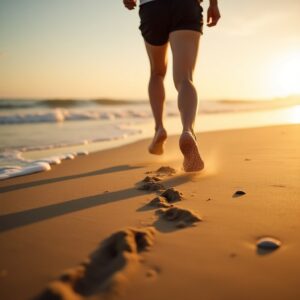
Transitioning to Barefoot Shoes
Your journey to barefoot running starts with finding the right shoes, but it’s vital to do it safely to avoid injuries. You should consider the benefits of barefoot shoes, which mimic running barefoot, and help you transition smoothly.
Gradual Transition
To begin your transition, start by gradually increasing the time you spend wearing barefoot shoes, allowing your feet to adapt to the new movement and strengthen your foot muscles.
Critical Form for Long-Term Success
One of the most important aspects of barefoot running is maintaining proper form, which includes landing mid-strike or fore-strike, and avoiding overstriding, to reduce the risk of injury and improve your overall running experience.
With proper form, you can enjoy the benefits of barefoot running, such as stronger feet and improved posture, while minimizing the risks associated with this type of running, like stress on joints. By focusing on your form and gradually transitioning to barefoot shoes, you can set yourself up for long-term success and a more enjoyable running experience.
Considering all points, you now have a solid understanding of the benefits of barefoot running. You can improve your foot strength, balance, and posture by ditching your shoes. With better footstrike and reduced stress on joints, you may enjoy a more natural running experience. Try barefoot shoes if you can’t run barefoot, and experience the benefits for yourself.
FAQ
What are the benefits of barefoot running?
A: The benefits of barefoot running include strengthening your feet, ankles, and calves, improving balance and stability, and reducing the risk of injury. It also allows for a more natural movement and can help improve posture. Additionally, barefoot running can help reduce stress on joints and promote a more natural footstrike.
Can I still experience the benefits of barefoot running if I wear shoes?
A: Yes, you can still experience the benefits of barefoot running by wearing barefoot shoes. These shoes are designed to mimic the feeling of running barefoot while providing protection for your feet. They have a natural-foot shape, zero-drop, flexibility, and natural foot support, which can help improve your running form and reduce the risk of injury.
How do I transition to barefoot running or barefoot shoes?
To transition to barefoot running or barefoot shoes, it’s necessary to do it gradually. Start by incorporating barefoot shoes into your routine and gradually increase the amount of time you spend wearing them. It’s also crucial to focus on your form and technique to ensure long-term success. You can start by wearing barefoot shoes for walking or short runs and gradually increase the distance and intensity over time.


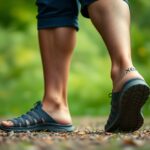


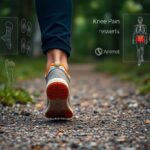
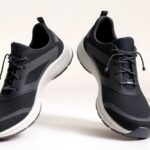
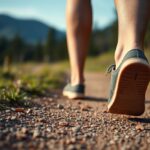

I appreciate this exploration of barefoot running! I personally transitioned to barefoot running a couple of years ago after many frustrating seasons of dealing with foot pain and shin splints. At first, it felt strange, but I was surprised by how quickly my feet adapted and became stronger. I noticed an improvement in not just my foot strength but also my overall balance and running form.
I’ve always been intrigued by the concept of barefoot running, especially as someone who loves the feeling of being connected to the ground while exercising. The idea that we can strengthen our feet and improve our running form by ditching our shoes really resonates with me. I remember my initial attempts at barefoot running; it was certainly a humbling experience. I had to adjust my stride and pay attention to my footfalls in a way I never did with shoes. It felt more primal, almost like returning to a natural state that we’ve lost in our heavily cushioned world.
I totally get what you mean about the humbling experience of barefoot running. When I first started, I was surprised by how much I had to recalibrate my entire approach to running. It’s like learning a new language—there’s this whole new vocabulary of sensations and movements to pay attention to. The feeling of connecting directly with the ground is really unique, and it makes every run feel more intense and alive.
I’ve been experimenting with barefoot running for a while now, and I’ve found it to be quite enlightening. At first, I was skeptical about ditching my shoes, especially since I’ve heard so many arguments about needing that extra support. But once I got used to it, I noticed a real difference in how my feet felt. It’s true that spreading out your toes and allowing them to move more freely can feel liberating, almost like giving them a well-deserved break from constrictive footwear.
Reading through your insights on barefoot running really resonates with me! It’s fascinating to consider how our relationship with running shoes has evolved over the years. I used to be a firm believer in the cushioning and support that running shoes provide, but a few months ago, I decided to embrace barefoot running, and the experience has been transformative.
It’s interesting how we often underestimate our own feet. They’ve been doing the heavy lifting long before cushy shoes entered the scene—talk about an unsung hero! Switching to barefoot running can feel like you’re going back to basics, almost like rediscovering your inner caveman, just without the loincloth.
You bring up a great point about how we often overlook our feet. It’s fascinating to think about all the work they do and how they’ve adapted to various terrains and conditions throughout history. Switching to barefoot running really does feel like a throwback to simpler times. I remember when I first tried it—I could almost feel those connections to our ancestors, navigating the world without the support of high-tech footwear.
I really appreciate the insights you’ve shared about barefoot running! It’s fascinating to think about how our running form has evolved with all the advancements in footwear technology, yet we’ve lost touch with the natural dynamics of our feet. I’ve been curious about this myself and tried transitioning to barefoot running a few months ago.
It’s great to hear that you’re exploring barefoot running! It’s fascinating, isn’t it? The evolution of footwear has brought so many options, but it’s easy to overlook the natural movement our feet are designed for. When I started delving into this topic, I was surprised to discover just how intricate our feet really are—over 26 bones and numerous muscles and ligaments all working together. It makes sense that our feet, once accustomed to varying terrains and natural surfaces, might feel a bit constrained in modern running shoes.
I completely agree with you about the fascinating nature of barefoot running and the architecture of our feet. It’s amazing to realize how much complexity is packed into what we often take for granted. I’ve also been exploring the shift away from traditional shoes, and it’s interesting to think about how much our footwear influences not only our running style but also our overall gait and posture.
It’s great to hear you’re exploring the shift away from traditional shoes! There’s something really eye-opening about realizing just how much our footwear shapes our movement patterns. When we switch to barefoot running or minimal shoes, we can rediscover how our feet were designed to function—it’s like reprogramming our bodies to work the way nature intended.
I totally get where you’re coming from—it’s wild to think about how much our running culture has shifted over the years. When you start looking into how shoes have evolved, it’s like peeling back layers of an onion. Some of those advancements sound great on paper, but they’ve also taken us further away from how our bodies were naturally designed to move.
It’s great to hear you’re exploring barefoot running. Many people find the shift not just about changing footwear but reconnecting with how their body moves. Our feet are incredibly designed, and when we let them operate more naturally, it can be eye-opening.
It’s great to hear that you’ve been exploring barefoot running! The shift away from relying on heavily padded shoes can feel really eye-opening, especially when you start paying attention to how your feet interact with the ground. Many people don’t realize just how much our footwear affects our natural biomechanics.
I find the idea of barefoot running incredibly fascinating! It’s so interesting to consider how our modern reliance on running shoes has shaped not only how we run but also how we think about foot health. I’ve been dabbling in minimalist footwear myself, and I’ve noticed significant changes in my running form and foot strength. It’s true what they say about the connection between our feet and the ground. When I made the transition from traditional sneakers to a more minimalist style, it felt like I was rediscovering the joy of running, almost as if I was reconnecting with nature and my own body.
It’s really refreshing to hear about your experience with minimalist footwear and how it’s impacting your running journey. The idea that our connection to the ground can transform the way we run and even how we feel about it is pretty profound. When we step away from the cushioning of traditional shoes, we’re not just changing our footwear; we’re essentially altering our relationship with the environment around us.
I’m really intrigued by the concept of barefoot running, particularly as someone who has spent much of my running journey in cushioned shoes. It’s fascinating to think about how our reliance on footwear might actually be hindering our natural movement. I remember when I first transitioned to minimalist shoes for a few of my shorter runs—it took time to adjust, but I felt a noticeable improvement in my form and a better connection to the ground.
You’ve captured some fascinating insights about barefoot running, and I couldn’t agree more on the numerous benefits it brings. The idea that we might have been conditioned to rely on shoes for support has led many of us to overlook the remarkable potential of our feet. In my own experience, transitioning to barefoot running has been transformative, not just for my feet and ankles, but for my overall approach to movement and fitness.
I must admit, the idea of going barefoot does make me chuckle a bit – I can just picture myself darting through the park, dodging rogue twigs and the occasional suspicious-looking puddle! But on a serious note, your insights into the benefits of barefoot running really strike a chord with me. I tried it last summer after hearing about the positive effects on foot strength and posture. At first, I felt like a newborn deer, wobbly and unsure, but after a few weeks, I noticed my feet becoming more agile and resilient.
It’s interesting how the mental image of going barefoot can stir amusement, right? It’s one thing to embrace the freedom of feeling the earth beneath your feet, and quite another to contend with all the little obstacles nature throws your way. Balancing on varying terrains can feel like a mini-adventure, especially when you throw in the unexpected barriers like twigs and puddles. Encountering a suspicious puddle can almost feel like a rite of passage in the barefoot running journey.
It’s interesting how going barefoot can evoke such a mix of laughter and serious contemplation. I can relate to that image of darting through the park, trying to avoid unexpected foot hazards; it really does bring a playful element to running. Your experience of feeling like a “newborn deer” is spot on. That initial awkward phase is almost a rite of passage, isn’t it?
I’ve been dipping my toes into barefoot running lately, and I have to say, it’s been quite the adventure! It’s incredible how something so simple can reshape your running experience. I’ve found that my balance has improved significantly, and I’m much more aware of how my feet interact with the ground. Admittedly, it took some time to adjust—switching from cushioned shoes to nothing at all feels a bit like learning to walk again at first.